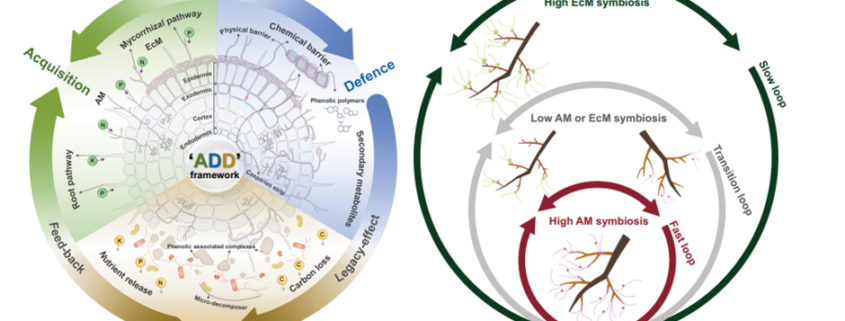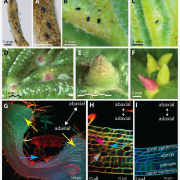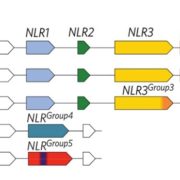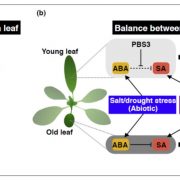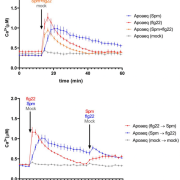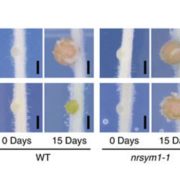Unveiling root trait syndromes in trees: Evolutionary insights into mycorrhizal partnerships
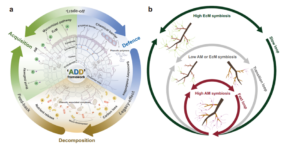 Plants, particularly long-lived trees, need to balance nutrient acquisition, herbivore and pathogen defence, and ultimately organic matter decomposition. The intricate relationship between these processes is crucial for the survival and growth of trees over their extended lifespans. Zheng et al. investigated the complex link between tree species and their mycorrhizal symbionts, focussing on how root trait syndromes evolved to optimise nutrient intake, defence, and decomposition, and leading to a proposed Acquisition-Defense-Decomposition (ADD) framework. AM (arbuscular mycorrhiza)-associated plants, which are prevalent in tropical locations, have root characteristics that promote quick nutrient acquisition, such as long root length and surface area. In contrast, EM (ecto-mycorrhiza) associated trees, which are found in temperate and boreal zones, have root features that emphasise nutrient conservation and defence, such as bigger roots and increased investment in secondary metabolites. These syndromes are also associated with decomposition processes, with AM roots contributing to quicker nutrient cycling and EM roots leading to slower decomposition rates, influencing soil carbon storage. The findings shed light on the evolutionary trade-offs that have formed root characteristics in response to environmental stressors and symbiotic interactions. By connecting root features to broader ecosystem functions, the work improves our understanding of how trees adapt to diverse ecological niches and how mycorrhizal relationships influence forest dynamics. It further emphasises the necessity of combining root trait studies and mycorrhizal ecology to guide conservation policies and forecast ecosystem responses to environmental change. (Summary by Tuyelee Das @Das_tuyelee) Nature Comms 10.1038/s41467-024-49666-3)
Plants, particularly long-lived trees, need to balance nutrient acquisition, herbivore and pathogen defence, and ultimately organic matter decomposition. The intricate relationship between these processes is crucial for the survival and growth of trees over their extended lifespans. Zheng et al. investigated the complex link between tree species and their mycorrhizal symbionts, focussing on how root trait syndromes evolved to optimise nutrient intake, defence, and decomposition, and leading to a proposed Acquisition-Defense-Decomposition (ADD) framework. AM (arbuscular mycorrhiza)-associated plants, which are prevalent in tropical locations, have root characteristics that promote quick nutrient acquisition, such as long root length and surface area. In contrast, EM (ecto-mycorrhiza) associated trees, which are found in temperate and boreal zones, have root features that emphasise nutrient conservation and defence, such as bigger roots and increased investment in secondary metabolites. These syndromes are also associated with decomposition processes, with AM roots contributing to quicker nutrient cycling and EM roots leading to slower decomposition rates, influencing soil carbon storage. The findings shed light on the evolutionary trade-offs that have formed root characteristics in response to environmental stressors and symbiotic interactions. By connecting root features to broader ecosystem functions, the work improves our understanding of how trees adapt to diverse ecological niches and how mycorrhizal relationships influence forest dynamics. It further emphasises the necessity of combining root trait studies and mycorrhizal ecology to guide conservation policies and forecast ecosystem responses to environmental change. (Summary by Tuyelee Das @Das_tuyelee) Nature Comms 10.1038/s41467-024-49666-3)


